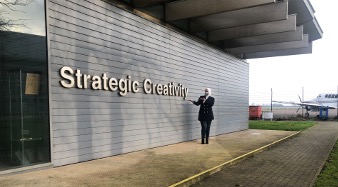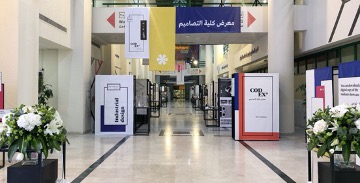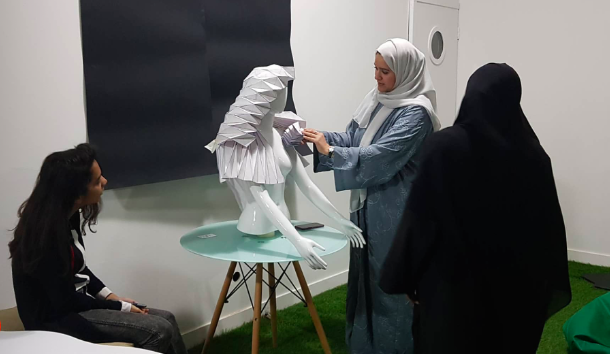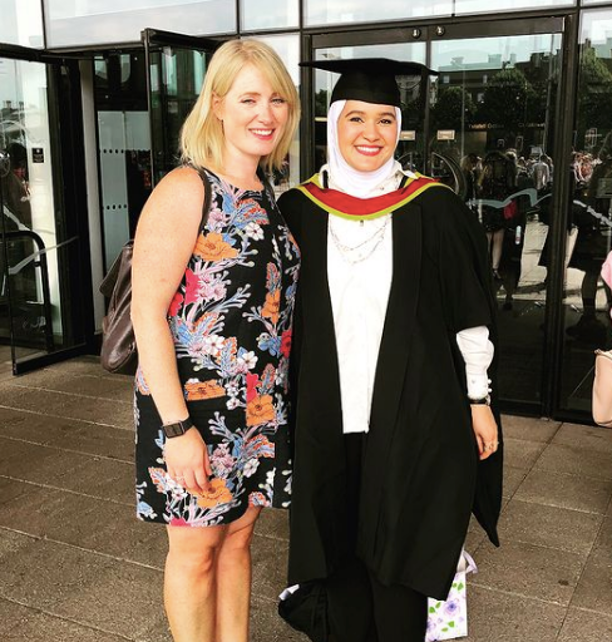My experiences from being a Tutor of Design in Saudi Arabia, to becoming a PhD student within C4D
12/02/2021

In 2015, I started my educational journey in the UK. At this point, my passion in the field of product and industrial design was triggered. As a higher education lecturer, I had to meet the minimum academic requirements of undergraduate degrees and a postgraduate qualification. Also, I was bound for constant development to keep up with the latest professional, academic, and even social life trends.
This position allowed me to continue my studies abroad. With my sponsors’ support; Saudi government and my employer (IAU) Imam Abdulrahman Bin Faisal University in Saudi Arabia, I had the chance to hold a second bachelor’s degree in Product Design, with a previous background in Interior Architecture; 1st bachelor’s degree. Then obtain an MSc in Product Design at Cardiff Metropolitan University.
With the experience I have gained through my design education, I found that working as a Design Lecturer in a design college is both challenging and rewarding. I have achieved a wide range of experiences, including handling stress, working with different people and being part of various committees, exhibitions and teaching teams.

I have always been keen to get involved in exhibition design and building. In my senior year, I enjoyed working in my exhibition project, this led me to becoming a member of the design team for the University booth at the international conference of higher education, held in Saudi Arabia. I have also participated in the designing and organising committees of both Ejad Expo and CODEX; students’ graduation projects yearly-show, as well as, Career Forum 1 and 2. I was also involved in designing the end-of-year Summer Exhibition at Cardiff Metropolitan University. Subsequently, in 2017 I was fortunate enough to work with a company’s in-house design team in my training period at EDB (Exhibition and Design Build) based in Cardiff.
Studying the second major did not interfere with my direction in both degrees as an undergraduate or postgraduate. However, although Interior Architecture and Product Design belong to the same field of creativity, it was challenging to study and work in these two fields. I have been introduced to various design methods and techniques, changed my creative direction and developed my ability to adapt to diverse situations, while problem-solving. Studying in the UK has increased my independence and strengthened my skills. I have had an opportunity to immerse myself in a new language, culture, and environment especially (the weather factor!).
Shifting to product design has significant advantages due to its involvement in multi-disciplinary areas encompassing technology, engineering, manufacturing, and even healthcare. Also, the crucial role of the designer in project management, analytics, and the industry supply chain exposes me to additional skills in terms of understanding data and translating hidden needs, which further influences business decisions.

The concepts of ‘human psychology’, ‘behaviour’, ‘user experience’, and ‘emotional attachment’ have always been of interest to me since my undergraduate studies where I worked on projects that served inclusive users and users with special needs, whether in the form of architectural or industrial perspectives. This interest was triggered when I was first introduced to the meaning of human factor and design theory topics in my second year at the architecture school. It caught my attention and encouraged me to explore and read more about it after graduation.
My senior thesis and project focused on “The impact of interior design to improve the curative environment for the elderly”. With this research, I was among the top three students in the class and as a result of this thesis, I took part in the Student Scientific Conference, where my work qualified for the finals. Accordingly, I had an opportunity to be a team member in the university’s initiative to configure an environment for special needs. Moreover, I have built up a deep understanding of human needs and psychology by working on several more projects and research, which involved devising customised products and allowed direct interaction with users of various cultural backgrounds, such as the elderly, children and those with special needs. Applying some of the tools of research methodology, such as focus group and observation, was crucial for learning interesting facts and developing hypotheses.
In addition to this, I have experience in tutoring students in various projects and in teaching several subjects related to my fields of interest, such as user-centred design, design industry and project studios. I have also hosted several workshops on developing industrial products directed by users’ emotional and biological needs, considering the context of contractual factors, physical attributes and the standard value.
As I go deeper into these areas, it motivated me to conduct further investigation. I had a chance to take an advanced diploma in the Origamic Digital Fabrication, run by (LAAC) Institution for Advanced Architecture of Catalonia, Barcelona. I developed with my team a responsive tool that reacts to negative human emotions, where it reflects and react as positive feelings. This specific experience revealed my passion for the human body mechanism concerning the surrounding environment and objects.
With this developed passion, I was looking for PhD programmes that are compatible with my interests and support my overlapped fields. I found that Cranfield University with its Centre for Competitive Creative Design (C4D) offers a comprehensive experience for innovation and design thinking, including a variety of projects and business opportunities, in addition to teaching and research experience. This field of study is a significant complement to the Industrial Design department in Saudi. Earning this degree will help me commence my lecturing position in both theoretical and practical subjects. I believe that this programme is the most compatible with my career and will help me achieve my short- and long-term career aspirations.

Categories & Tags:
Leave a comment on this post:
You might also like…
Keren Tuv: My Cranfield experience studying Renewable Energy
Hello, my name is Keren, I am from London, UK, and I am studying Renewable Energy MSc. My journey to discovering Cranfield University began when I first decided to return to academia to pursue ...
3D Metal Manufacturing in space: A look into the future
David Rico Sierra, Research Fellow in Additive Manufacturing, was recently involved in an exciting project to manufacture parts using 3D printers in space. Here he reflects on his time working with Airbus in Toulouse… ...
A Legacy of Courage: From India to Britain, Three Generations Find Their Home
My story begins with my grandfather, who plucked up the courage to travel aboard at the age of 22 and start a new life in the UK. I don’t think he would have thought that ...
Cranfield to JLR: mastering mechatronics for a dream career
My name is Jerin Tom, and in 2023 I graduated from Cranfield with an MSc in Automotive Mechatronics. Originally from India, I've always been fascinated by the world of automobiles. Why Cranfield and the ...
Bringing the vision of advanced air mobility closer to reality
Experts at Cranfield University led by Professor Antonios Tsourdos, Head of the Autonomous and Cyber-Physical Systems Centre, are part of the Air Mobility Ecosystem Consortium (AMEC), which aims to demonstrate the commercial and operational ...
Using grey literature in your research: A short guide
As you research and write your thesis, you might come across, or be looking for, ‘grey literature’. This is quite simply material that is either unpublished, or published but not in a commercial form. Types ...






